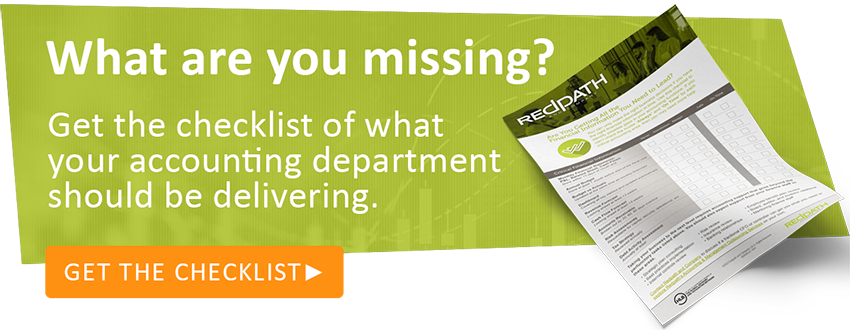UPDATE: The Corporate Transparency Act May Still Apply to You
On March 1, a district court judge ruled that the Corporate Transparency Act (CTA) is unconstitutional. However, his decision applied only to the...
5 min read
 Redpath and Company
:
June 1, 2023
Redpath and Company
:
June 1, 2023

Editor's note: This piece was updated from 2020 to include additional resources.
June 1, 2023 — Encouraging U.S. economic performance to reach its potential is important enough that there is a tax credit for research and development (R&D). Technology companies, and really any company that works with software, should make sure they’re taking advantage of it if they are eligible.
The PATH Act of 2015 made the credit available to more companies, greatly enhanced the credit, and made it permanent. The R&D tax credit is worth considering as it can provide an immediate source of cash for many small to midsize companies.
The R&D tax credit is a government-sponsored benefit that provides cash incentives for companies of all sizes. This applies to any business that uses science or technology to innovate or improve its products. They must be conducting qualified research activities (QRAs) within the United States.
Technology and software development involves a lot of R&D, so these activities qualify for the R&D tax credit. Developing, improving, or modifying existing products is all part of it.
Development of software that is new to a technology company, as opposed to new to the world, can qualify for the credit. Software intended for sale, lease, or license to customers is considered external use software. Software developed for external use is considered a QRA for purposes of qualifying for the credit if it meets the standards of the R&D tax credit four-part test:
Apply the four-part test to each business component (i.e. each individual software version or module developed). Examples of external-use software applications that may qualify include:
Software developed for internal use may also qualify for the credit. Internal use software supports the business internally, e.g. it's used for administrative functions. It could also be for financial or HR management functions, or for support services within the business.
Internal use software must meet not only the four-part research test above but a three-part heightened test, as well. The three-part heightened test includes demonstrating the software;
Determining significant economic risk involves an additional two-part test. Software development involves significant economic risk if a combination of factors exist. They include the commitment of significant resources and substantial uncertainty. There may be uncertainty that the R&D investment would be recouped within a reasonable amount of time.
Technology companies also benefit from credit calculations. This is because it includes the salaries of developers who work on QRAs. To calculate the credit, you need to run a few numbers; qualified research expenditures (QREs) for the tax year must be totaled for each QRA.
Let’s start with understanding QRE. Put simply, they are the expenses that are eligible for consideration in the calculation of Tax Credit totals. This includes;
- the wages of the employees who carry out the R&D,
- the supplies used during the R&D process, and
- a portion of what a contractor spends on R&D activity.
A regular credit is equal to 20% of the excess, if any, of QREs over a base amount.
The base amount is derived by multiplying a fixed-based percentage by the average annual gross receipts for the four years prior to the credit year, not to exceed 50% of the QREs.
Base Amount <= .5QRE * Fixed-Based Percentage * Average of Annual Gross Receipts Over the Last 4 Years
The fixed-based percentage is derived from QREs divided by gross receipts during the years of 1984-1988, not to exceed 16%. Start-up companies use a flat 3% for the fixed-based percentage for the first five tax years. The amount of the credit computed is income unless the reduced credit is elected.
This can be calculated in an easier way.
Many companies elect the alternative simplified credit (ASC) over the regular credit for its simplicity. The ASC method for calculating the research credit follows a four-step process:
.14*(Current Tax Year QRE-(Average of Last Three Years' QRE*.5))
If there are no QREs in any of the three preceding tax years, the ASC is 6% of the QREs for the current tax year. See below for an example of the ASC.
|
QRE's |
Avg. QRE's for 3 preceding years x 50% |
QRE's over 50% of average QREs for 3 preceding years |
Applicable Percentage |
R&D Credit Amount |
|
|
Year 1 |
$50,000 |
- |
$50,000 |
6% |
$3,000 |
|
Year 2 |
$100,000 |
- |
$100,000 |
6% |
$6,000 |
|
Year 3 |
$150,000 |
- |
$150,000 |
6% |
$9,000 |
|
Year 4 |
$200,000 |
$50,000 |
$150,000 |
14% |
$21,000 |
|
Year 5 |
$250,000 |
$75,000 |
$175,000 |
14% |
$24,500 |
The R&D credit is an incremental credit rewarding companies that continue to increase their spending on QRAs. The ASC example above shows how the credit amount increases each year resulting from QREs steadily increasing from Year 1 to Year 5. The credit is intended to motivate companies to increase their investment in QREs from prior years.
The credit is a dollar-for-dollar credit used to offset federal income taxes owed. If no income tax is owed for the applicable tax year, the credit can be carried forward up to 20 years, reducing future income tax owed. C corporations claim the credit on their business tax return. S corporation shareholders and partners claim the credit on their individual tax returns.
The credit has generally been limited to zero if an alternative minimum tax (AMT) is owed or less than $25,000 of net tax is owed in any given tax year. However, the PATH Act significantly softened this limitation. Now eligible small businesses can use the credit to offset AMT owed. An eligible small business is a business with less than $50 million in average gross receipts for the three preceding years. This will make the credit more available to small to mid-size pass-through business owners.
The PATH Act also provided an alternative method to apply the credit. Qualified small businesses can elect to use the credit to offset a portion of their payroll tax. A qualified small business is a business that has less than $5 million in annual gross receipts and has gross receipts for no more than five years. The credit is offset against the employer’s social security portion of the FICA tax with a cap of $250,000.
This is a great enhancement for start-up companies. Start-ups can now receive an immediate benefit from the credit to offset payroll tax. This is better than having to postpone this income tax offsetting credit until profitability is achieved.
The ASC can now be claimed for all open tax years. This means eligible companies can look back to prior year returns, typically the last three tax years plus the current year, to see if they qualify for potential credits that weren't claimed when they first filed.
Many states, including Minnesota, offer the credit. It can reduce current and future state income taxes owed in addition to federal income taxes owed.
The PATH Act also made the R&D tax credit permanent. The credit has been available as a temporary credit since 1981 and now is here to stay. This perpetual nature is another great reason to consider taking advantage of the benefits of the R&D tax credit.
Corporations and partnerships can use Form 6765 ‘Credit for Increasing Research Activities’ to calculate and claim the credit. It is critical to maintain proper documentation of the qualified research activities and apply it within the letter of the law.
Navigating the R&D tax credit can be complex, with many details to consider. It's important to speak with a professional who can assess your unique circumstances and guide you through the eligibility process. Don't miss out on potential tax savings–reach out to an expert and get the necessary documentation submitted.

On March 1, a district court judge ruled that the Corporate Transparency Act (CTA) is unconstitutional. However, his decision applied only to the...

Bookkeeping is strategically important for every business because financials form the foundation for daily operations and future planning....

In a decision issued March 1, 2024, U.S. District Court Judge Liles Burke ruled that the Corporate Transparency Act (CTA) is unconstitutional....